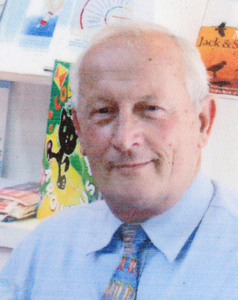Michael Wilcox has an extensive professional background as an author, professional artist, conservator of art works, lecturer, engineer and inventor.
During his research towards a Post Graduate Diploma in Art and Design at Curtin University Western Australia, he spent equal time within the art and science departments, studying light physics in relation to the needs of the artist and designer. This research led to his book Blue and Yellow Don’t Make Green, first published in 1988. This work changed the way that countless artists, designers and craft workers now mix and use colour. It was the first break through in this area in over 200 years.
Continued research led to the publication of The Wilcox Guide to the Finest Watercolour Paints. This book led to many changes both in the art material industry and in the pigments used in artists’ paints. Other books followed including a series of ‘Colour Notes’, each designed to examine a particular aspect of colour mixing and use for a specific element. Two books and CDs explaining colour to children, What is Colour? and Colours Around Us have been well received by the education establishment. A book and CD guiding the home decorator adds to the list.
Another work, Colour Harmony and Contrast for the Artist analyzes the reaction to various colour combinations and offers a sound basis and further insight for the thinking artist. His latest book, Glazing with an Emphasis on the Craft of Painting, is the result of 10 years research into the glazing techniques of the Old Masters. The result of the study equips the artist of today with the techniques of glazing developed by the Masters. Lessons from the past are brought fully up to date.
His publications have been translated into many languages, including Japanese, Chinese, Korean and Dutch.
In addition to his research and writing, Mr. Wilcox has developed specialist mixing palettes, workbooks, CDs, DVDs, and home study courses.
A range of artist’s paints of the finest quality have been developed and are available. Consisting of just 12 colours they give the maximum range available from a limited palette – not just in mixed hues but in transparencies and opacities.
The School of Colour operates on an international basis and will continue to develop based on the firm belief that art and science must once again come together. The first time that they assisted each other led to the Renaissance, the second to the Impressionists. What will the third merger bring to artists, designers, craft workers, decorators and all users of colour?
Mr. Wilcox has given seminars world wide to artists in the USA, Canada, the UK, Europe, Singapore, New Zealand and Australia. Workshops have been taught to Art Conservators in NYC, and the University of London, and talks presented to the International Colour Society. If your organisation is interested in hosting lectures or workshops, please contact Barbara@schoolofcolor.com.

